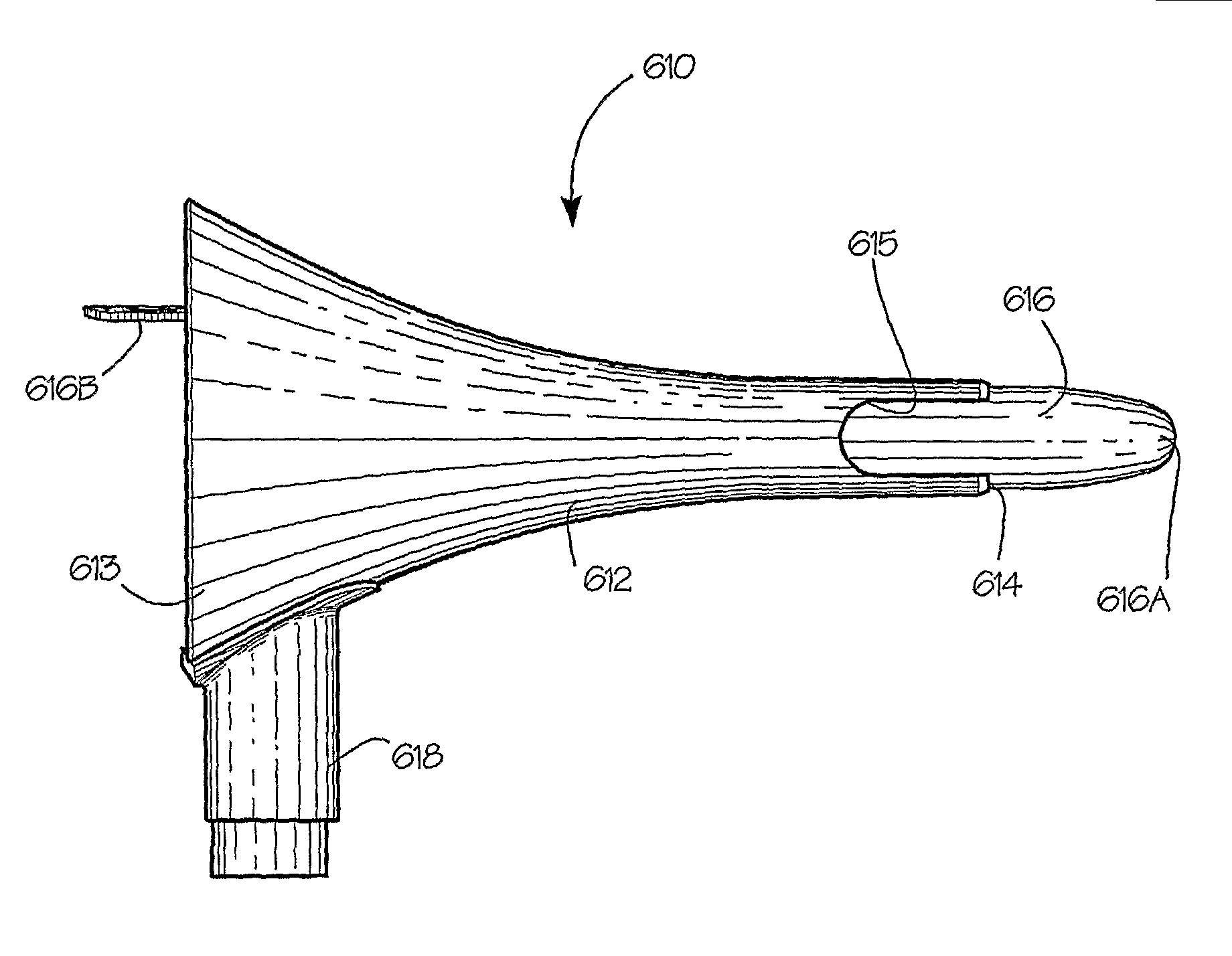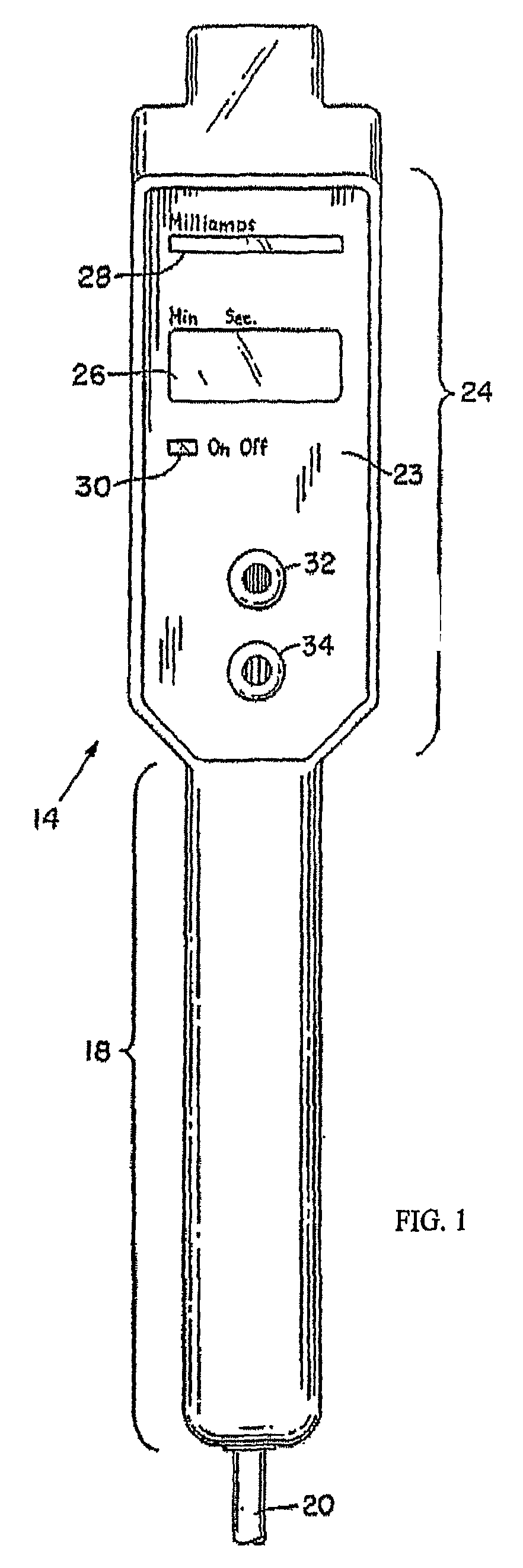Probes for electrical current therapy of tissue, and methods of using same
a technology of tissue electrical current and probes, which is applied in the field of probes, can solve the problems of delayed examination of patients, delayed diagnosis of more serious colorectal problems, and progression of hemorrhoidal diseas
- Summary
- Abstract
- Description
- Claims
- Application Information
AI Technical Summary
Benefits of technology
Problems solved by technology
Method used
Image
Examples
Embodiment Construction
[0025]FIG. 1 shows one embodiment of an electrical current delivery system in which the probe embodiment of the subject invention may be employed. See U.S. Pat. No. 4,898,169 (which is incorporated by reference in its entirety). The system comprises a handpiece 14 having a lower handle portion 18 from which extends a connector cord 20 to the base unit 12, and, as shown in FIG. 2, includes a rear indentation 22 for receiving the fore finger of the user in gripping engagement. The planar face surface 23 of the handpiece, on the upper patient treatment portion 24, contains display elements of, e.g., elapsed time of treatment (LED numeric display 26), level of treatment current (LED bar graph 28), and circuit status indicator (on / off display 30). The upper patient treatment portion further contains switches 32, 34 for respectively incrementally increasing and decreasing the level of D.C. current through the probe and, when activated by the surgeon simultaneously, e.g., by pressing with ...
PUM
 Login to View More
Login to View More Abstract
Description
Claims
Application Information
 Login to View More
Login to View More - R&D
- Intellectual Property
- Life Sciences
- Materials
- Tech Scout
- Unparalleled Data Quality
- Higher Quality Content
- 60% Fewer Hallucinations
Browse by: Latest US Patents, China's latest patents, Technical Efficacy Thesaurus, Application Domain, Technology Topic, Popular Technical Reports.
© 2025 PatSnap. All rights reserved.Legal|Privacy policy|Modern Slavery Act Transparency Statement|Sitemap|About US| Contact US: help@patsnap.com



